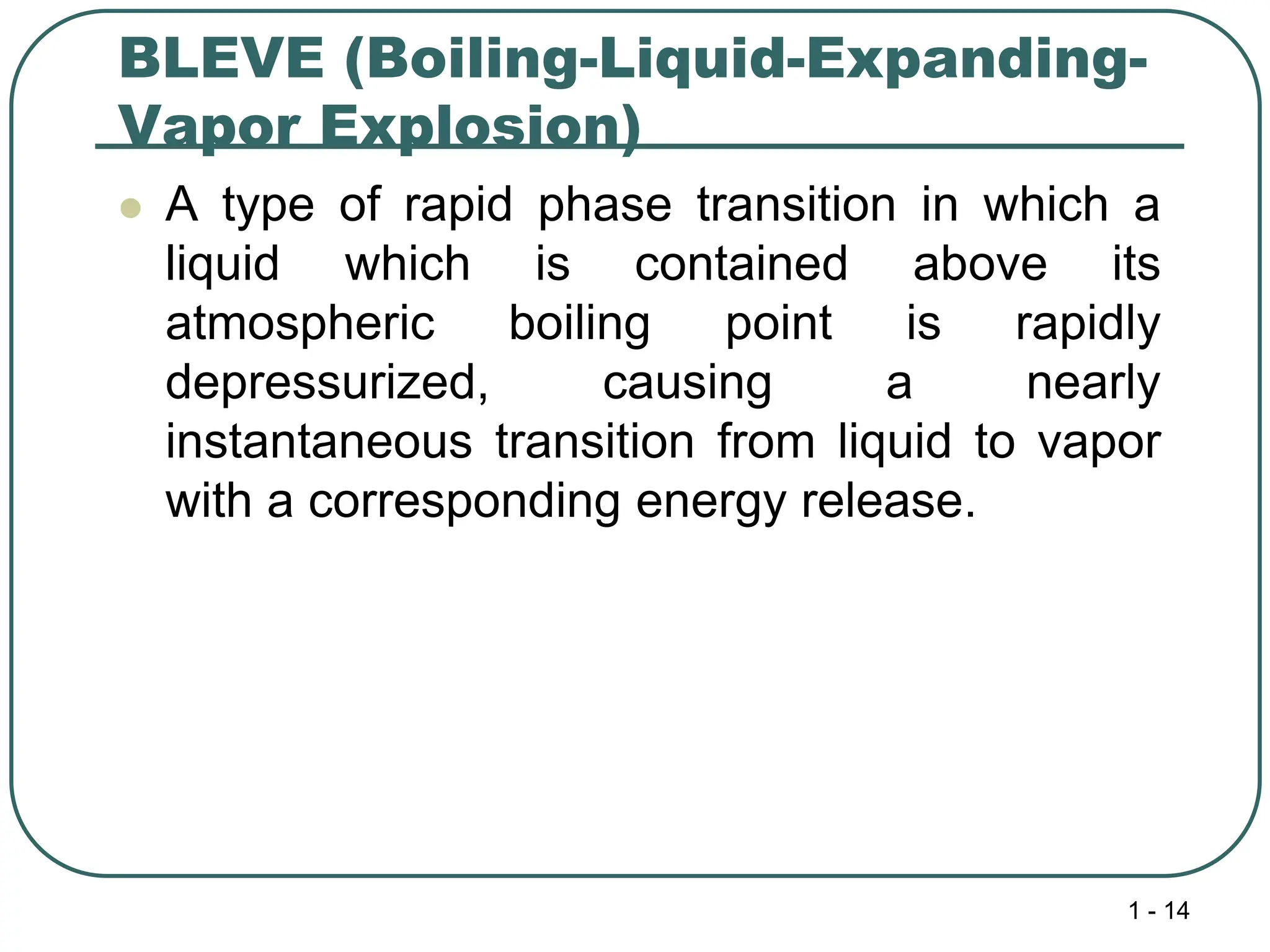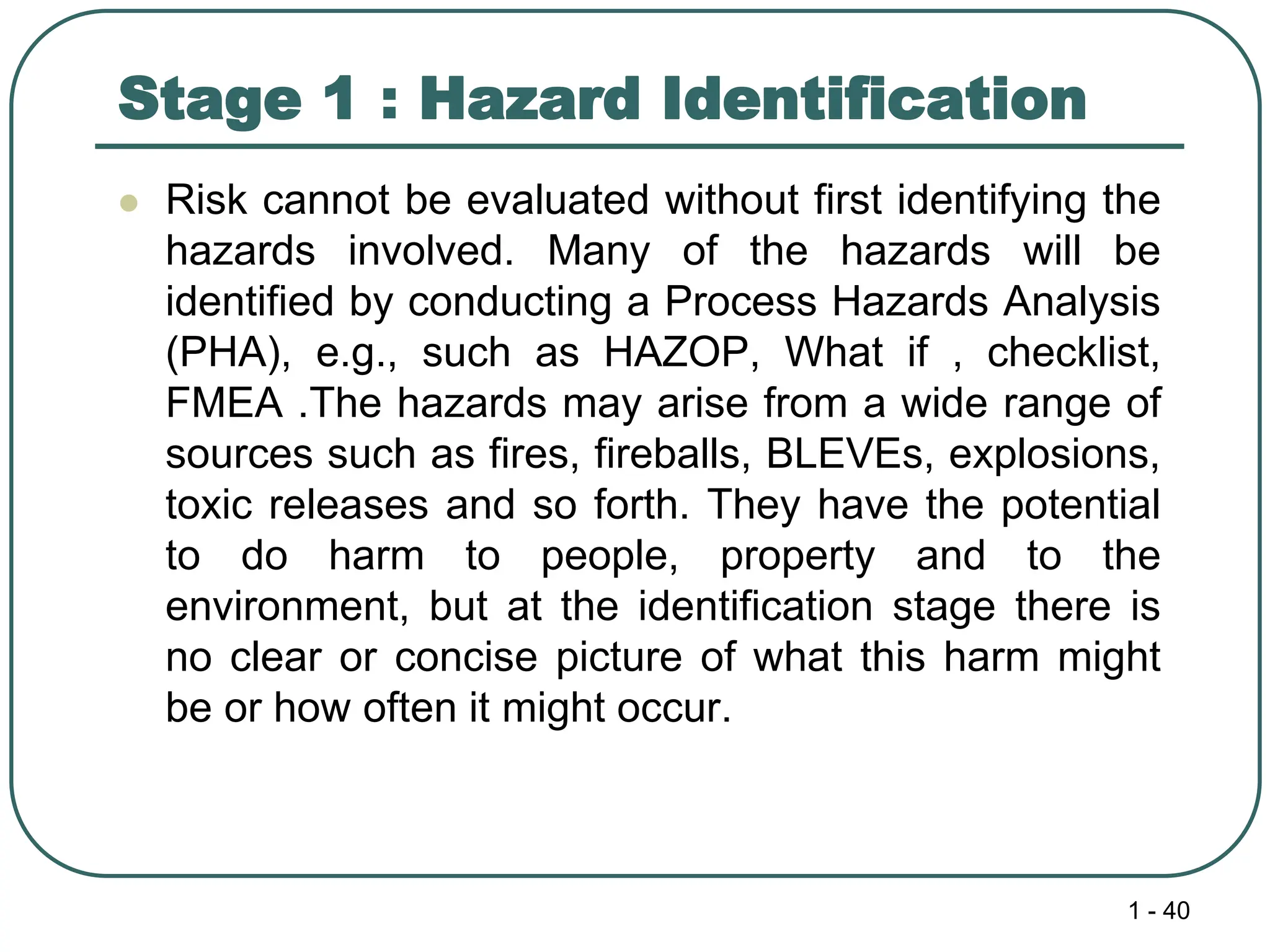This document provides an overview of fire safety and hazard analysis. It discusses key risk concepts and terminology such as hazardous events, risk, risk analysis, risk appraisal, risk assessment, risk control, and risk management. Specific safety terms like availability, fail-safe, interlock system, and protective device are defined. The document also discusses past oil and gas and processing industry accidents, how process risks are analyzed in three stages including hazard identification, risk assessment, and risk management. Hazard control methods are also introduced.




























































































































































